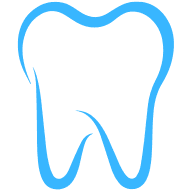Welcome to an exciting exploration of the latest advancements in dental technology. This post will take you on a journey through the innovative tools and techniques that are revolutionizing the dental industry. From digital impressions to laser dentistry, we'll delve into how these advancements are enhancing patient comfort and improving dental outcomes.
Digital Impressions and 3D Printing
The world of dentistry is embracing digital technology, and it's transforming the patient experience. One of the most significant advancements is the use of digital impressions. Gone are the days of uncomfortable and messy traditional impressions. Digital impressions provide a precise and detailed 3D image of the patient's mouth.
This technology not only improves patient comfort but also enhances the accuracy of dental restorations. It allows dentists to create crowns, bridges, and implants that fit perfectly. The digital impression can be sent directly to a dental lab or used in-office with a 3D printer.
3D printing in dentistry is another groundbreaking advancement. It enables dentists to create dental appliances right in their office. This means quicker turnaround times for patients and a more streamlined process. From surgical guides to clear aligners, 3D printing is revolutionizing dental procedures.
Laser Dentistry
Laser dentistry is another exciting advancement in the dental field. It offers a less invasive alternative to traditional dental procedures. Lasers can be used for a variety of dental treatments, including gum surgery, cavity treatment, and teeth whitening.
One of the main benefits of laser dentistry is that it often requires less anesthesia and results in less bleeding and swelling. This means a more comfortable experience for patients and quicker recovery times.
Moreover, laser dentistry can be more precise, reducing the risk of damage to surrounding tissues. It's a promising advancement that's making dental treatments more efficient and patient-friendly.
Dental Implants and Bioengineering
Dental implants have come a long way, thanks to advancements in dental technology. Modern implants are more durable and natural-looking than ever before. They provide a permanent solution for missing teeth and can significantly improve a patient's quality of life.
Bioengineering is also making waves in the field of dental implants. Researchers are exploring ways to use stem cells to grow new teeth. While this technology is still in its early stages, it holds immense potential. Imagine a future where missing teeth can be replaced with new, naturally grown ones. It's a fascinating prospect that could revolutionize dental care.
Teledentistry
Teledentistry is a relatively new concept that's gaining traction, especially in the wake of the COVID-19 pandemic. It involves the use of digital communication technologies to deliver dental care remotely.
Patients can consult with their dentists via video calls, receive diagnoses, and even get treatment plans without stepping into a dental office. This can be particularly beneficial for patients living in remote areas or those with mobility issues.
Teledentistry is not meant to replace traditional dental visits but to complement them. It can help in monitoring oral health, providing education, and addressing minor dental issues. It's a significant step towards making dental care more accessible and convenient.
Artificial Intelligence in Dentistry
Artificial Intelligence (AI) is making its mark in various fields, and dentistry is no exception. AI can assist in several areas of dental care, from administrative tasks to clinical applications.
AI-powered chatbots, for instance, can handle patient inquiries, schedule appointments, and send reminders. On the clinical side, AI can help in diagnosing dental conditions and planning treatments. It can analyze radiographs and detect issues that might be missed by the human eye.
While AI cannot replace human dentists, it can certainly enhance their capabilities. It can help in improving efficiency, reducing errors, and delivering better patient care.
Augmented Reality and Virtual Reality
Augmented Reality (AR) and Virtual Reality (VR) are not just for gaming anymore. They're making their way into the dental field and opening up new possibilities.
AR can help in patient education, showing them a 3D view of their dental issues and proposed treatments. This can lead to better understanding and informed decision-making.
VR, on the other hand, can be used for pain and anxiety management. Patients can wear VR headsets and immerse themselves in a calming environment during dental procedures. It's a novel approach that can make dental visits less daunting.
Embracing the Future of Dentistry
The latest advancements in dental technology are transforming the way we perceive dental care. They're making procedures more efficient, less invasive, and more comfortable. As we continue to embrace these innovations, we can look forward to a future where dental care is not just about treating issues, but also about enhancing overall oral health and wellbeing. The future of dentistry is indeed exciting, and we're just getting started.

